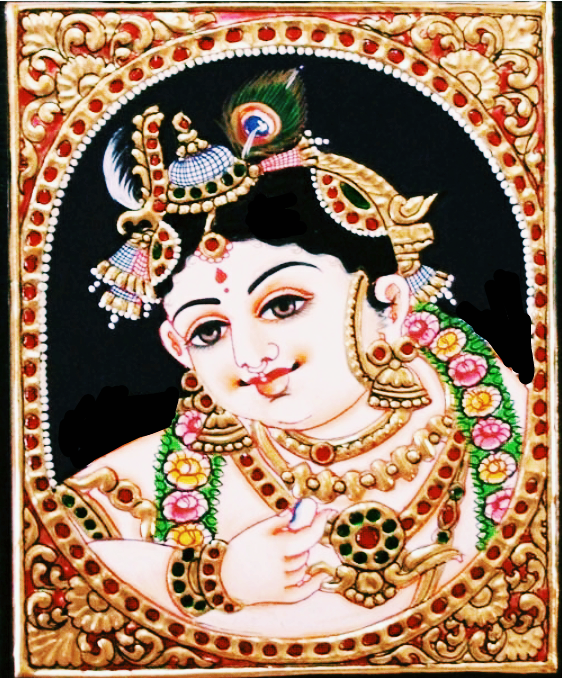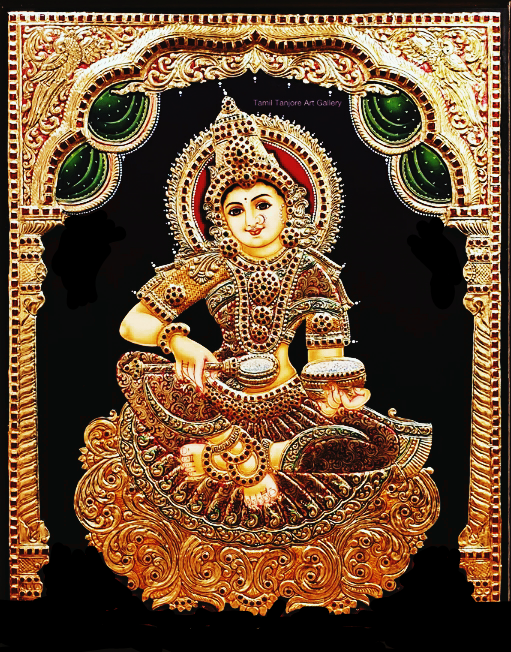Tanjore Paintings
Tanjore painting is Dravidian style classical art that originated in 1600 AD approximately. This art form was encouraged by the Nayakas in the southern state of India, Tamil Nadu. This iconic artwork from Tanjore was famously known for the religious depictions and devotional icons in gold coating. The painting originally consisted of icons from Hinduism but in some instances had Jain, Muslim, and Christian depictions. Also, these mythological themed paintings had a spiritual meaning which led to their unique recognition.
This royal heritage stands out of the other paintings because of the minerals and efforts put into it. For instance, the paintings are usually gold foiled and have precious stones like rubies which are polished to give a three-dimensional figure. This projects the characters in the painting in different sizes and embodies them to give a realistic feel to the art form. The majority of the authentic 16 th -century paintings are in Indian government museums, British and Dutch museums.
In modern times, this artwork has become a symbol of Indian classical artform and the majority of the ingenious artisans are customizing the paintings for their customers who want to present them as a souvenir. The painting is now being used as wall hangings, festive souvenirs, exported to foreign countries to encourage people to support Indian artwork, and is also a favourite piece of work for art collectors around the world.
There are several steps involve in making one fine painting. One painting needs the efforts of different skilled artisans; a skilled embosser, a visage impressionist, a 22-carat gold leaf guilder, and a master painter who specializes in accurately portraying facial expressions make up this team of artisans. The art work starts with initial sketches of their imaginary figures/ icons on a muslin cloth that is pasted on a wooden frame like a canvas. The second step involves mixing zinc oxide or chalk powder with Arabic gum along with adhesives to make a paste which is later applied on the muslin cloth. After the sketches are perfected, the image is beautified by adding precious stones, rich colours, 22 carat gold foils, and laces. This skill-powered painting gives a day light glow and makes it distinct from the other art works. Due to this passion and perfection in selecting and applying the best minerals, the painting lasts much longer and preserves the rich heritage, culture and devotion for generations.
Originally, the artisans made Tanjore paintings with diamonds, sapphires and other jewels but due to exponential rise in the cost of the minerals, the present day paintings are made of semi-precious stones, cut glass and cost effective substitutes like synthetic dyes and mineral dyes. As the years passed, the artisans changed the original style of painting and brought in different mediums to paint on like sarees, mirrors and glass statues. These alternate mediums have helped the artisans in creating more popularity for the artwork and have kept the Tanjore painting styles prevalent even in the 21st century. The Tanjore painting is a well-known art form which has been evolving in the past years and has kept up with the trend which makes it a demanding art work around the world. It has now become a symbol of richness and a support for the artisans who are preserving the culture in its unique way.


